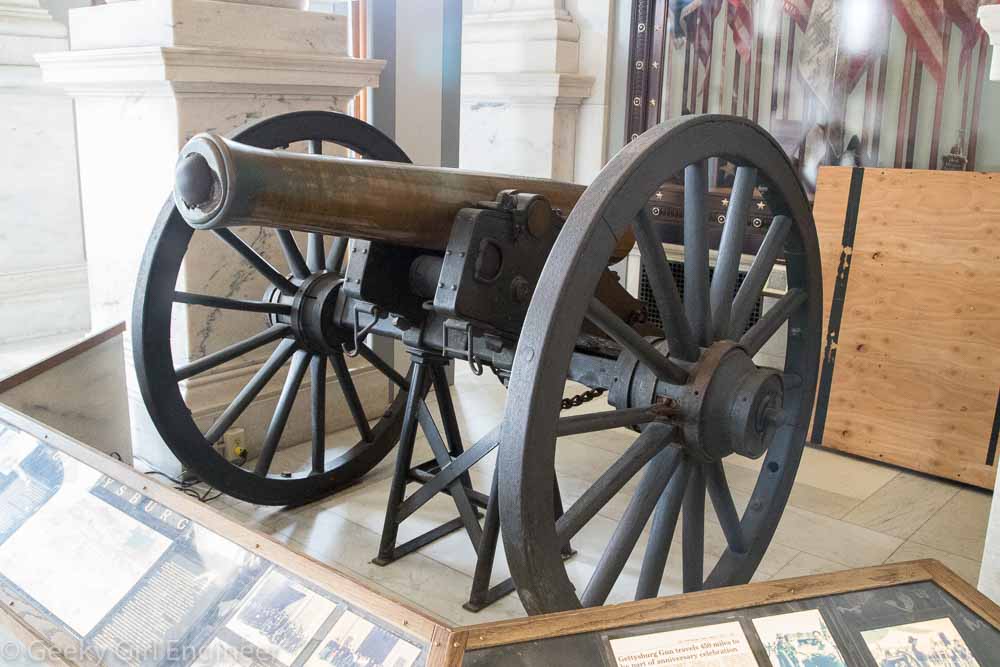Right past security at the entrance to the Rhode Island State Capitol, is the Gettysburg Gun. This cannon was used by Battery B of the 1st Rhode Island Light Artillery as they fought for the Union at Gettysburg in 1863. During the battle, members of the artillery was attempting to reload the cannon when it was struck by a Confederate shell. You can clearly see the dent on the left side of the bore. Two members of the artillery were killed, and other members attempted to keep reloading the gun, but the shell had compressed the mouth enough that the ball would not fully go in the gun. The men tried hammering the ball in, but the gun was hot from being fired numerous times and from being struck. Thus the gun was starting to cool after not being fired for several minutes, and the ball became permanently lodged in the mouth. It probably somewhat melted into place.
The gun became somewhat famous and a remembrance of the battle. It was put on display in Washington then in Rhode Island. It sat at the entrance to the Rhode Island Capitol for decades. Now here is the part I find most fascinating. It was not until 1962 that it dawned on people that the gun powder is loaded into a gun of this type BEFORE the ball is loaded. The ball got stuck while they were trying to load it. Hence in 1962 it finally occurred to some people that there was probably gun powder sitting in the barrel. Very old gun powder. Probably very unstable, old gun powder. Naval ordnance personnel and Rhode Island Army National Guard temporarily took the gun away. They put it into a pool and drilled two holes into it. You can see at least one of the holes on the front. It looks like two, but I am not positive if both are the drilled holes. Sure enough, there was gun powder in there. They flushed out two pounds of gun powder. They left the barrel flooded with water to disarm any residue gun powder before returning it to the capitol.
Our tour guide said the moral of the story is never stop asking questions. This gun was rendered safe because some nameless person asked questions and possibly prevented a horrible incident. I think one of the morals is assume all weapons are loaded. In my line of work as an environmental engineer, when I go to a site, I assume the site is contaminated until proven otherwise. When it comes to safety, plan for the worst, hope for the best. Even if that means a 100 year old weapon.




